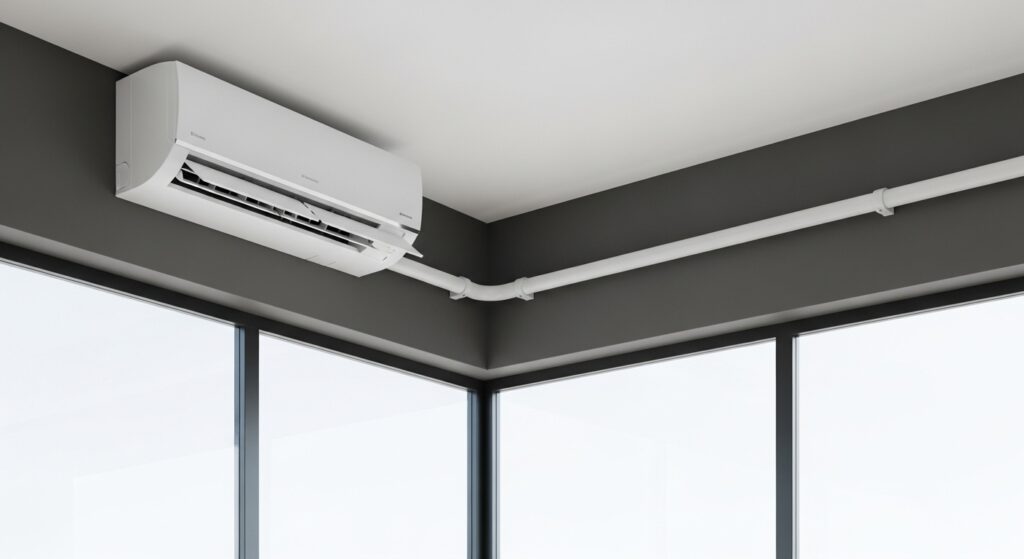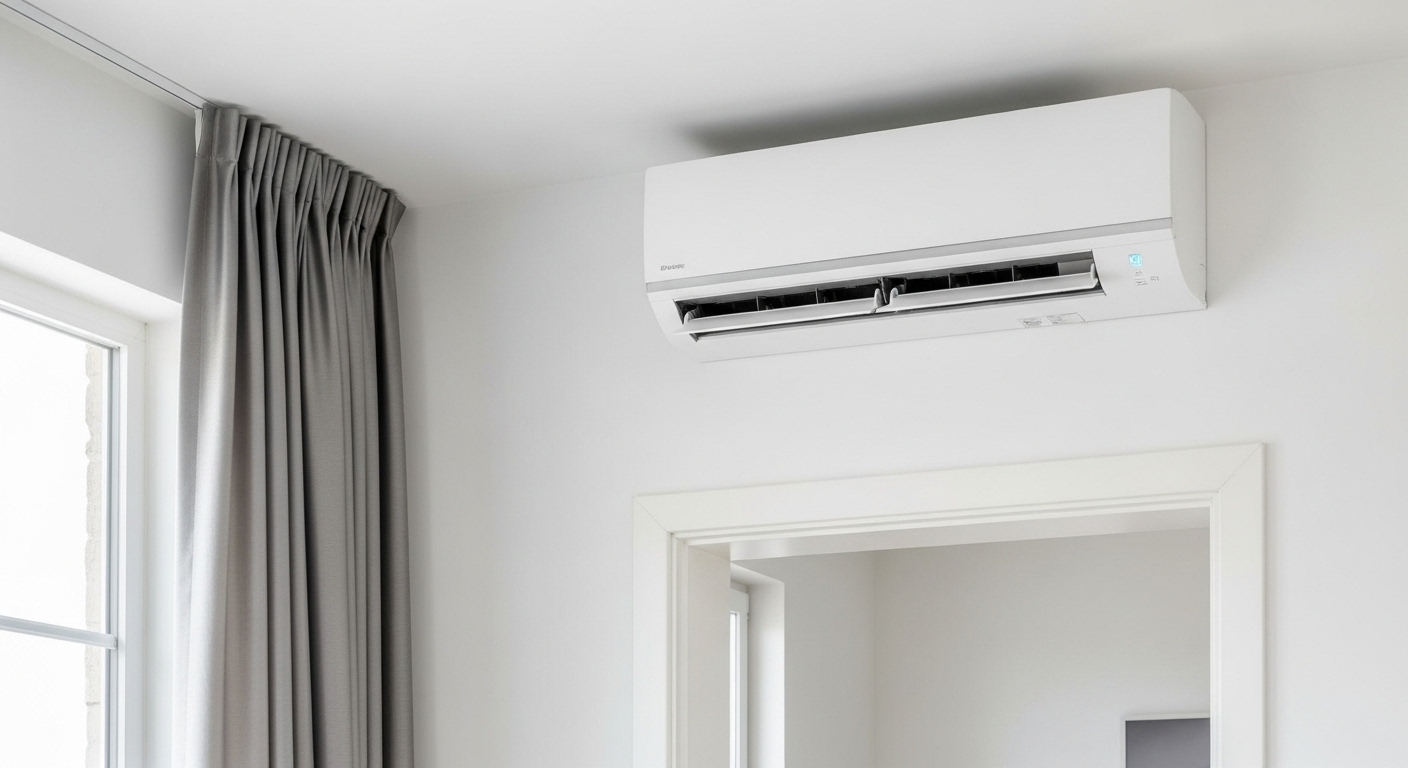When most people think about home comfort, they usually focus on temperature. Is the house too hot, too cold, or just right? But there’s another factor that plays an equally important role in how comfortable we feel indoors: humidity.
In the Blue Mountains, where the climate shifts between dry winter air and humid summer conditions, managing indoor humidity is vital. Too much moisture in the air can make your home feel sticky, musty, and uncomfortable. Too little can lead to dry skin, irritated sinuses, and even damage to furniture and timber floors. Striking the right balance is the key to a healthier, more pleasant indoor environment.
This article explores the connection between indoor humidity and comfort, how air conditioning systems affect humidity levels, and what you can do to keep conditions inside your home just right throughout the year.
What Is Indoor Humidity?
Humidity refers to the amount of water vapour in the air. It’s usually expressed as relative humidity (RH), which is the percentage of moisture in the air compared to the maximum it can hold at a given temperature.

For indoor comfort, most experts recommend a relative humidity between 40% and 60%. Anything significantly higher or lower than this range can affect not only how you feel but also your health and the condition of your home.
The Impact of High Humidity
When humidity levels climb above 60%, the air feels heavy and sticky. This is common in summer storms or during periods of high rainfall in the Blue Mountains. High humidity can cause several problems.
It reduces your body’s ability to cool itself because sweat does not evaporate as effectively. This makes temperatures feel hotter than they actually are, increasing discomfort and reliance on air conditioning. High moisture levels also encourage mould and mildew growth, which can trigger allergies and asthma, create musty odours, and damage walls, ceilings, and fabrics. Even timber furniture and floors can swell or warp when exposed to prolonged humidity.
In addition, high humidity makes your air conditioner work harder. Instead of focusing solely on cooling, the system must also remove excess moisture from the air, which increases energy consumption.
The Impact of Low Humidity
On the other end of the spectrum, humidity below 30% is too dry for comfort. This is more common in winter when heaters and reverse cycle air conditioners dry out the indoor environment.
Low humidity can irritate the skin, eyes, and respiratory system. People often notice cracked lips, dry throat, or worsened allergy symptoms in these conditions. It can also affect sleep quality, leaving you feeling less rested.
Beyond personal comfort, dry air can cause timber floors and furniture to shrink or crack. Musical instruments, artwork, and books are also at risk of damage in environments that are too dry.
Finding the Balance: Ideal Humidity Levels
The sweet spot for indoor humidity is generally between 40% and 60%. Within this range, the air feels comfortable, allergens and mould are minimised, and your air conditioning system operates more efficiently.
Maintaining this balance requires understanding how your heating and cooling systems interact with humidity, as well as making small adjustments to household habits.
How Air Conditioning Affects Humidity
Modern air conditioners don’t just adjust temperature – they also influence indoor humidity.
In cooling mode, AC units naturally dehumidify the air. As warm air passes over the cooling coils, moisture condenses and is drained away. This helps reduce stickiness during humid summer days. However, running your unit at very low temperatures for extended periods can over-dry the air.
In heating mode, especially with reverse cycle systems, air conditioning often reduces humidity. Heated air holds more moisture, but the process of warming it can still dry out the indoor environment, leading to discomfort in winter.
Some advanced systems now include dedicated humidity control features, offering more precise management of indoor comfort.
Practical Tips for Managing Indoor Humidity
There are several simple ways homeowners can manage humidity levels for year-round comfort.
Use your AC’s dry mode during humid summer days. This setting focuses on removing moisture from the air without excessive cooling, making your home feel fresher. Make sure you keep up with regular AC maintenance. Dirty filters and coils reduce your unit’s ability to manage humidity effectively.
Ventilation is also critical. Use exhaust fans in kitchens and bathrooms to remove moisture at the source. Opening windows on drier days allows fresh air circulation. In winter, consider using a humidifier if indoor air feels too dry. Small, portable units can restore comfort without affecting the entire house.
Sealing gaps and insulating your home helps regulate both temperature and humidity, keeping extremes at bay. Avoid indoor activities that add excess moisture, such as drying clothes inside, without providing adequate ventilation.
The Health Connection
Humidity levels directly impact health and wellbeing. Excess humidity encourages dust mites and mould growth, both of which are common asthma triggers. Mould spores can spread through the air, causing respiratory irritation even in healthy individuals.
Low humidity, on the other hand, increases susceptibility to colds and flu by drying out nasal passages and reducing the body’s natural defences. For children, elderly residents, or anyone with pre-existing conditions, maintaining healthy humidity is particularly important.
Balanced humidity can improve sleep quality, reduce allergy symptoms, and contribute to overall wellbeing.
Protecting Your Home and Belongings
It’s not just people who are affected by humidity – your home and possessions are too. High moisture levels can lead to peeling paint, damp stains, and damage to plasterboard. Furniture, wooden frames, and flooring are especially vulnerable, expanding or warping with excess moisture.
When the air is too dry, the opposite occurs. Timber can shrink and crack, leather furniture may become brittle, and valuable items such as artwork or books can deteriorate. Electronics can also suffer in dry environments due to increased static electricity.
By keeping humidity balanced, you’re protecting not just your comfort, but also the long-term condition of your home.

When to Seek Professional Help
While homeowners can take simple steps to manage humidity, sometimes professional advice is needed. If you notice persistent condensation on windows, mould growth, or musty odours, it’s worth having your air conditioning system checked. A qualified technician can assess whether your unit is operating efficiently, recommend upgrades such as zoning or inverter systems, and suggest additional solutions like dehumidifiers or improved insulation.
Professional servicing also ensures filters, coils, and drainage systems are clean, which is essential for maintaining healthy humidity control.
Final Thoughts
Indoor humidity is often overlooked, but it plays a major role in home comfort, health, and energy efficiency. Too much or too little moisture in the air can make your home feel uncomfortable, damage belongings, and even affect your wellbeing.
By understanding how air conditioning interacts with humidity and making simple adjustments, you can maintain a healthier, more comfortable indoor environment. Regular servicing, smart use of your AC settings, and good household habits all contribute to striking the right balance.
In the Blue Mountains, where climate extremes are part of daily life, paying attention to humidity is one of the simplest ways to enhance comfort at home. With the right approach, you can enjoy cleaner air, lower energy bills, and a more pleasant living space year-round.





